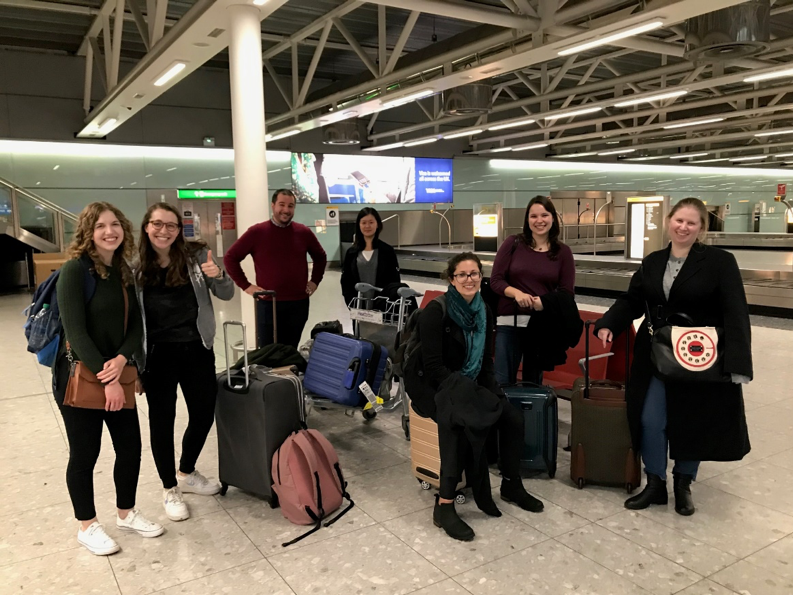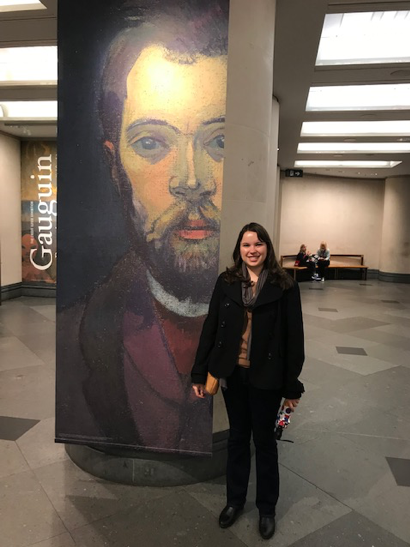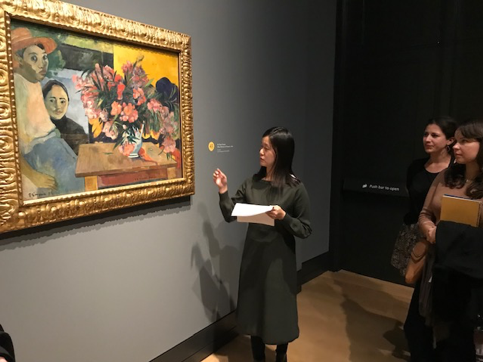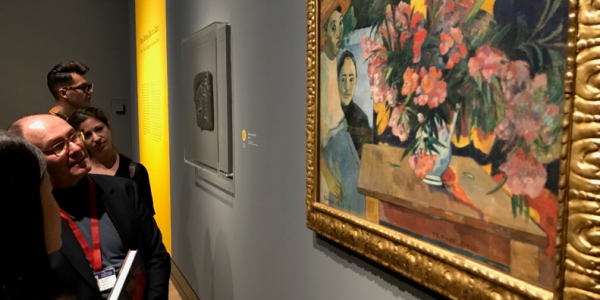As part of the course "Paul Gauguin in Context," a group of students traveled to London over fall break for an immersive experience studying the artist's work and life.


In conjunction with the course "Paul Gauguin in Context," a group of seven students traveled to London over fall break with Elizabeth Childs, Etta and Mark Steinberg Professor of Art History. With generous support from the West Bay View Foundation, the Department of Art History and Archaeology's annual travel seminar integrates museum- and collections-based study trips into course curricula. The trip included five doctoral students, one master's student, and one undergraduate major. Previous iterations of the travel seminar — which explored connections between 20th-century American and Mexican art, and the work of Henri Matisse — have traveled to, respectively, Mexico City with Angela Miller, professor of art history and archaeology, and to New York, Baltimore, and Washington, D.C., with John Klein, professor and acting chair of art history and archaeology.
In the course, the students have been studying the art, life, and avant-garde career of the French Symbolist artist Paul Gauguin (1848-1903), who worked in France, the Caribbean, and French Polynesia. Fortunately, the semester started with the opportunity to study a major Gauguin exhibition here in St. Louis at the Saint Louis Art Museum. Students then conducted research on Gauguin's portraits, the subject of a major international exhibition that opened at the National Gallery of London in October. (Childs was a consultant on the show, and contributed an essay to the catalogue, published in 2019 by Yale University Press).


The stay in London began with a late afternoon trip to the Tate Britain, in an effort to fight off jet lag. The group toured a blockbuster exhibition on the work of the Romantic poet and artist William Blake.

Afterward, the group spent a long and exciting day in the "Gauguin Portraits" exhibition at the National Gallery of London. Each student delivered an oral report on a chosen portrait and engaged the class in close looking and discussion. With works gathered together from Europe, America, and Russia, the exhibition was a revelatory overview of the ways in which Gauguin questioned and strove to reinvent the traditional genre of the portrait and self-portrait. Interested onlookers in the crowded show occasionally joined in to listen to the students' stimulating discussion.

The third day was full, as well. It began with a visit to the exhibition at the British Museum, "Inspired by the East: How the Islamic World Influenced Western Art." The focus here on the western cultural practices of Orientalism, and its impact on the visual arts, complemented well the cross-cultural focus of some of their Gauguin studies. Students then had several hours to tour the world-renowned collections of this monumental museum, including the Elgin Marbles from the Parthenon and the Rosetta Stone, which first enabled the translation of Egyptian hieroglyphs in the 19th century.

The group then moved onto the Tate Modern museum, where they visited a recently opened and very provocative installation, "Fons Americanus," by the American contemporary artist Kara Walker. This large fountain, inspired by a traditional fountain celebrating the Victorian empire that is located in front of Buckingham Palace, forcefully exposes the human costs of colonization and conquest, and highlights in particular the tragedies of the slave trade. The piece had only been open a few days when the group was fortunate enough to visit. The group capped this stimulating day with a visit to the Globe Theater, where they sat in the open air to watch the uproarious "summer" season's final performance of Shakespeare's "A Midsummer's Night's Dream."
On the final day, the group revisited the Gauguin show at the National Gallery, where they were greeted by chief curator Christopher Riopelle, who spent a few hours taking students through the show and engaging with their ideas and observations. They were thus able to continue the lively discussion of two days previous with the world expert who had co-curated the exhibition. On the final afternoon, students were free to visit the museum of their choice, and several went back to the Tate Modern or ventured off to the Wallace Collection or into the vast galleries of the National Gallery or to the nearby National Portrait Gallery. It was an exhausted and deeply satisfied group of young art historians that returned home on the last evening of fall break, ready to return to their classes on Wednesday morning.






